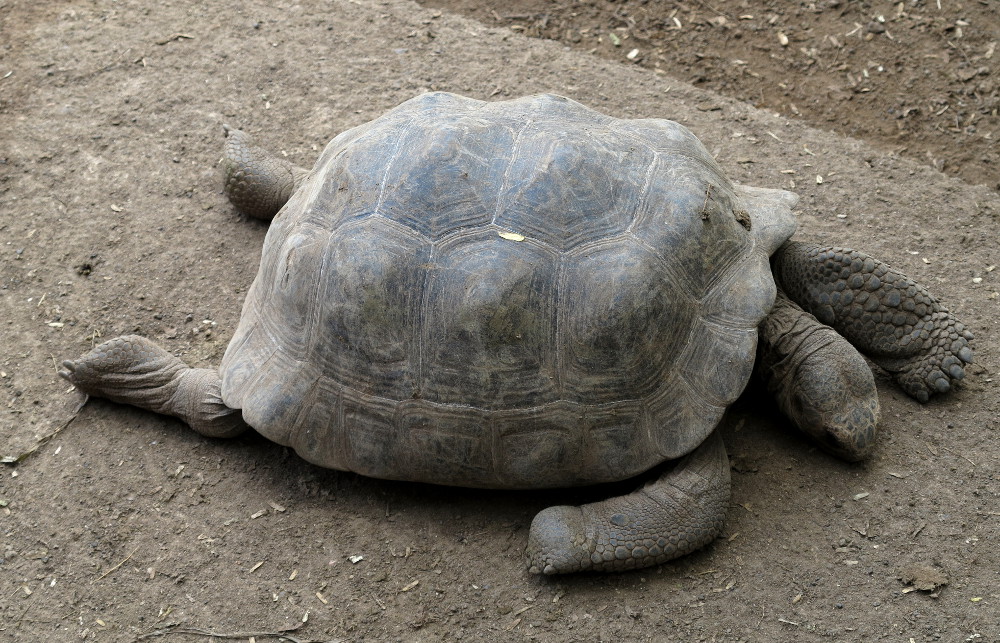
Once a tortoise reaches five years old it is more likely to survive to maturity. When we make jokes about tortoises being slow we mean slow.

Galapagos tortoises also seem to like to wallow in a good mud hole so one should be provided if the space allows it.
Galapagos tortoise lifespan in captivity. It is one of the largest tortoise species in the world native to the Islands of Galapagos. These reptiles are giants and can live for over 100 years in the wild. However those in captivity are well treated and get good medication enabling them to live for over a hundred years.
Another characteristic feature of Galapagos tortoises is their longevity. The average lifespan in the wild is over 100 years whilst in captivity they are known to live even longer than this with the oldest tortoise on record being 170 years old. This makes them the longest living of all vertebrate species.
A photo from the Galapagos National Park of giant tortoises which have lived in captivity for decades and helped rescue their species from the brink of extinction There are now over 2000 of them on Española Island. The giant tortoises are known for their long leathery necks and lifespans of. Galapagos Tortoise lifespan varies - they often live past 100 years in the wild or to as much as 170 years in captivity.
The age of an individual tortoise can be estimated by counting the rings of a shell scute. How much does a Galapagos Tortoise weigh. The Galápagos tortoise complex or Galápagos giant tortoise complex is a species complex of 15 12 extant and 2-3 extinct very large tortoise species in the genus Chelonoidis which also contains three other species from mainland South AmericaThey are the largest living species of tortoise with some modern Galápagos tortoises weighing up to 417 kg 919 lb.
Tortoises dont reach sexual maturity until about 20-25 years in captivity and about 40 years in the wild. They usually mate between about January and June in the rainy season. Males can mate with the female of their choice as their weight allows them to overpower her.
The Galapagos giant tortoise spends an average of 16 hours per day resting. The rest of their time is spent eating grasses fruits and cactus pads. They enjoy bathing in water but can survive for up to a year without water or food.
Small birds such as Galapagos finches can often be. This is the case with the giant Galápagos tortoise endemic to Pinzón Island Chelonoidis ephippium. A head-start program has been in place for 50 years without an evaluation of whether this.
Water should be provided at all times. Galapagos tortoises also seem to like to wallow in a good mud hole so one should be provided if the space allows it. These tortoises can live well over 100 years.
Once a tortoise reaches five years old it is more likely to survive to maturity. Captive rearing has been used in Galapagos since 1965 to help restore threatened tortoise populations of. The Galapagos tortoise captive populations represent a critical hedge against extinction and an important source of individuals for population reinforcement.
A previous study by our group identified the geographic and evolutionary origin of 59 tortoises of unknown ancestry housed in three enclosures at the CDRS on Santa Cruz utilizing mito. Captive reproduction of Galápagos tortoises G. Nigra appears to be seasonal in at least the San Diego colony where mating occurs from August to October when tempera-tures are highest and nesting occurs from January through April Bacon 1980.
How-ever Throp 1975 found that males in the Honolulu Zoo colony were reproductively. Galapagos Tortoise Determination of the Origin of Captive Galapagos Tortoises. A great number of the Galapagos tortoises that are currently in captivity were taken off of various islands in Galapagos early in the 20th century and brought to North America.
Two of the tortoises are currently still alive and may even surpass the oldest tortoise on this list someday. These tortoises managed to live such long lives because they were well cared for and loved. Lonesome George c1910 2012 Oldest Age Reached.
The Galapagos tortoise is exceptionally slow-growing animals that take about 20 to 25 years to fully mature but they compensate for this with an incredible lifespan. The oldest recorded lifespan was more than 150 years. Unfortunately most perish within the first 10 years of life.
Natural recruitment of juvenile tortoises into the wild population has since begun. The first-ever complete census of the San Cristóbal tortoise population completed in November 2016 resulted in a population estimate of 6700 animals with many juveniles and subadults tortoises less than 20-25 years old. Galápagos tortoise Speed arrived at the San Diego Zoo in 1933 as an adult.
He lived to be an estimated 150 years old. When we make jokes about tortoises being slow we mean slow. Galápagos tortoises amble along at an astonishing 016 miles per hour 26 kilometers per hour.